Pumps for an aquarium: purpose and types, selection and installation
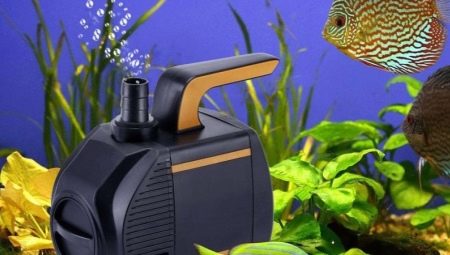
Under natural conditions, the fish itself finds optimal conditions for its existence with appropriate purity, temperature regime, water speed and oxygen concentration. In a stationary home aquarium, the required environment for its survival is formed artificially by means of electrical and mechanical equipment. The main device, without which all the fish in the aquarium will float belly up, is the aquarium pump for pumping water, which performs several options in parallel.
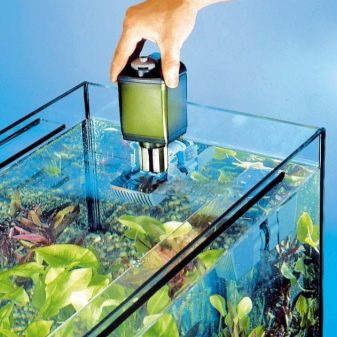
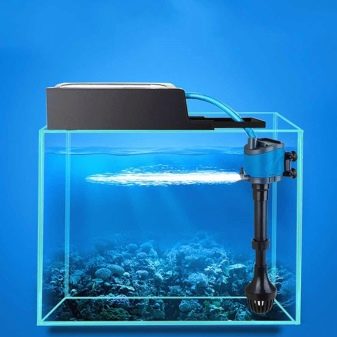
What is it and why are they needed?
A pump for pumping liquid is also called a pump, a compressor, and also an aerator. The main purpose of this unit is to create a flow (flow), pump out water, ensure its circulation in the aquarium and stable oxygen saturation. As such, an aquarium is an enclosed space, therefore, the vegetation and living organisms in it without aeration will be sorely lacking oxygen.
Aquarium vegetation is capable of converting carbon dioxide into oxygen; nevertheless, the efforts of the vegetation alone may not be enough for the comfortable existence of the inhabitants of the mini-reservoir. It is for the purpose of oxygenation of water that aquarium pumps are practiced.
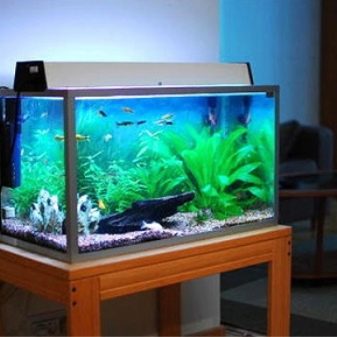
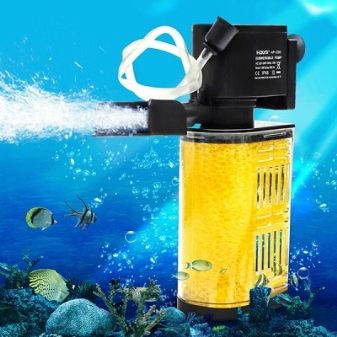
In an ordinary reservoir, the saturation procedure occurs naturally, as a result of the movement of water, blowing wind. In a home reservoir, this is not done, and without a pump, the water will take on the appearance of some kind of mash or swamp.The pump is designed in such a way that air enters the aquarium through specialized pipes, as a result of which the liquid is saturated with oxygen. The supply pressure is regulated by special clamps located on the tubes. Porous tips (sprayers) are mounted on the end of the tube.
Sprayers are capable of producing bubbles of various sizes, but the smaller they are, the more area they will fill in the aquarium.

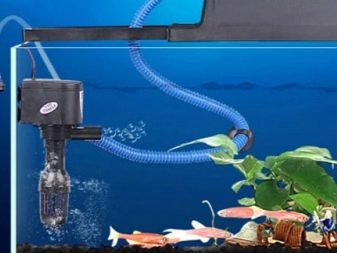
Water, after passing through the porous tips in the form of air bubbles, rises upward, where the bubbles burst and destroy the protein film on the water surface, thus improving the natural saturation of the liquid with oxygen. As the bubbles move around the aquarium, the water layers are mixed, which leads to an even water distribution and water temperature.
The pumps help to increase the flow rate of the soil, creating the conditions necessary for the comfortable life of soil microorganisms. That also counteracts the decay of fish and plant matter residues, the formation of methane, ammonia and hydrogen sulfide. With insufficient oxygen saturation of the water in the aquarium, all kinds of diseases appear in its inhabitants and vegetation, and as a result, the likely death of all living things.
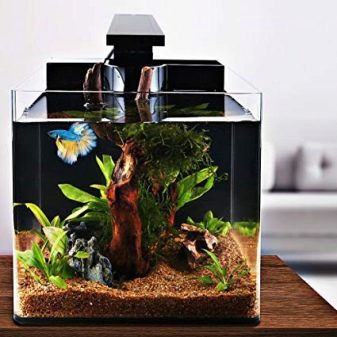
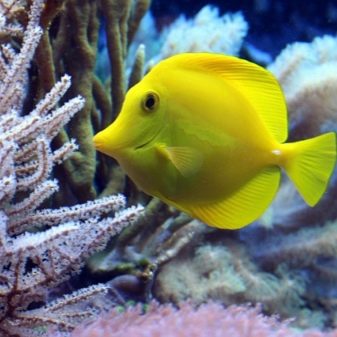
Varieties
Aquarium pumps for pumping liquids differ in a number of parameters. By internal work items, they can be broken down into:
- piston (vibration);
- membrane.
Piston pumps push air through themselves by means of an installed piston. Piston units are durable and much more powerful than membrane units, but they are noisier and vibrate. It is advisable to use such an apparatus for tanks with a capacity of more than 200 liters. Most often, such devices are installed in large aquariums or column aquariums. The advantages of piston aerators are long operating time and high throughput.
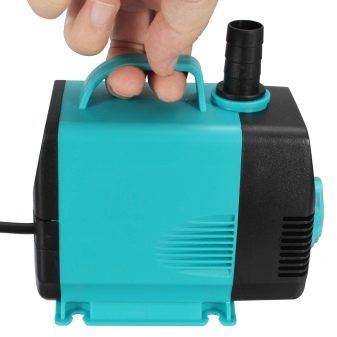
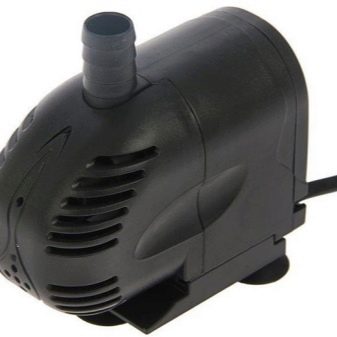
The air is supplied by a diaphragm-type compressor by means of membranes. The main advantages of membrane units are noiselessness and low consumption of electrical energy. However, these compressors have a low flow capacity and are used for tanks up to 150 liters.
According to the method of installation, the pumps are divided into:
- submersible (internal);
- external.
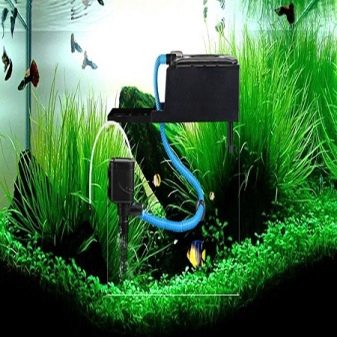
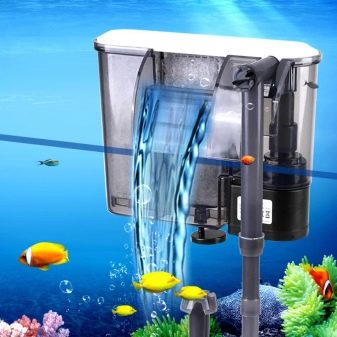
From the name it is already clear that submersible devices are installed under water by means of specialized clamps or suction cups. External pumps are installed outside the aquarium. To perform aeration, air supply pipes are drawn from the compressor into the aquarium. In an aquarium, water can be of different structure (fresh or sea), which affects the internal design of the units. With these parameters, different materials are used in the manufacture of the impeller (impeller):
- for fresh water, non-corrosive steel (stainless steel) is practiced;
- for salty sea water, ceramics are used.
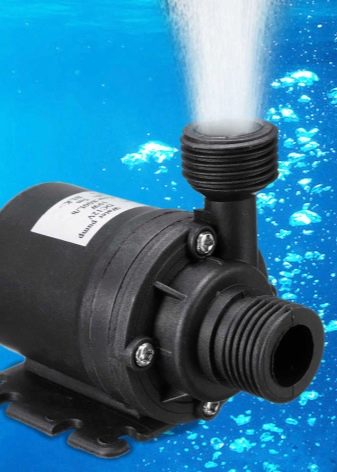
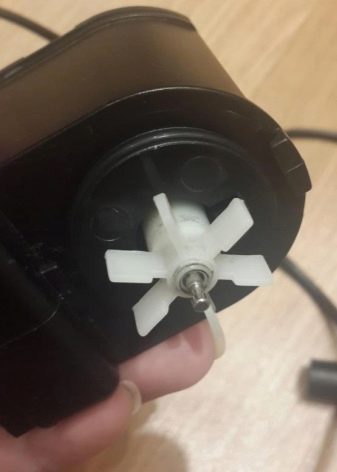
External water pumps have one major flaw. During the installation process, it is necessary to take into account that the device itself and the hoses will need to be hidden so as not to spoil the look of the interior space of the room.
Also, pumps are circulating, flow, lifting. Lifting devices are used to pump water from one reservoir to another, circulating devices are used to form a strong flow, and flow pumps are used to organize liquid flows.
Some pump modifications are equipped with power control and fluid flow orientation devices.
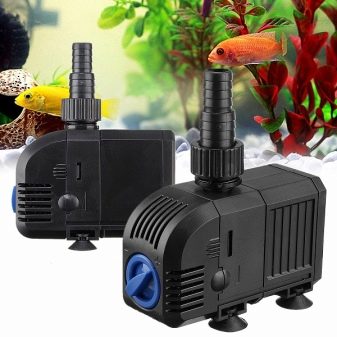
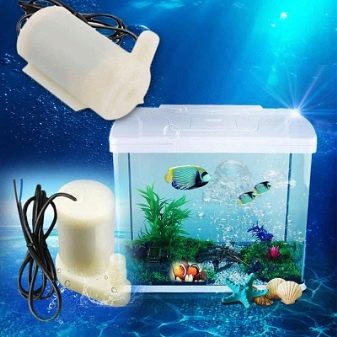
How to choose?
On sale there is an extensive range of pumps for aquariums of Russian and foreign production. When making a choice, it is necessary to pay attention to the following aspects.
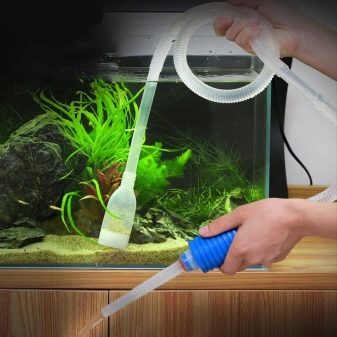
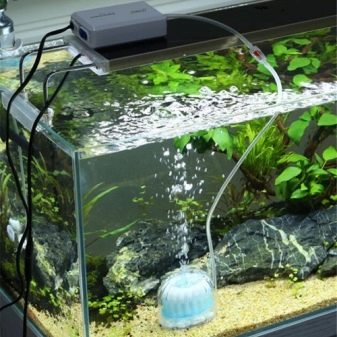
Mounting method
All aquarium pumps, as previously mentioned, are divided into 2 types: external and internal (submersible).The former are placed outside the aquarium and, as a rule, are fixed to its walls from the outside. The most common type is the internal pump located inside the aquarium. In fact, any aquarium compressor used for pumping liquid is equipped with suction cups or specialized clamps at the bottom of the case, it can be installed without much effort on the walls of the aquarium, both externally and internally.
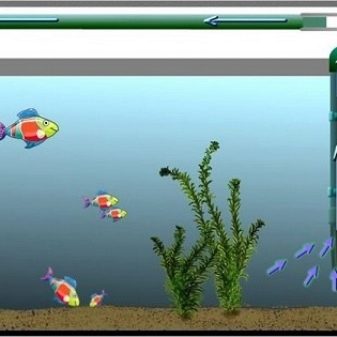
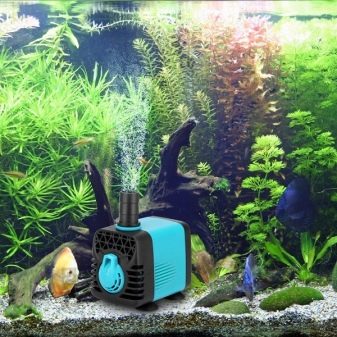
Bandwidth
In the data sheet of any pump, the cubic capacity of the pumped liquid is indicated - liters / time (productivity). Choosing a pump for a specific aquarium, you should multiply its cubic capacity by 3-5 times, the resulting number should coincide with the passport data of the pump productivity, measured in l / h.

Power
The aerator works non-stop, therefore, in order to save electrical energy, it is necessary to select samples with the lowest value, which varies from 4 W to 35 W and more. With the rest being the same conditions, it is recommended to choose the pump with the lowest power, since this indicates that the efficiency of the pump is higher. More power consumption means more power dissipation and no excess heat source is required in the loop.
When choosing a compressor, not only the volume of the aquarium is provided, but also its local climate: the number of living inhabitants, vegetation, the presence of decorative items.
The most powerful unit in a small aquarium, or vice versa, can lead to a violation of its functionality and have a detrimental effect on the microclimate.

Lifting height
One of the characteristics of electric pumps, noted in the data sheet, is the height of the water rise, which is directly related to the power and productivity of the pump. This value can be of fundamental importance in the case of using a compressor for graduated filling with liquid lifting or pumping it out of the reservoir. The larger the reservoir, the more powerful the pump will be required. The one that pumps from 3 to 5 volumes per hour will be productive.
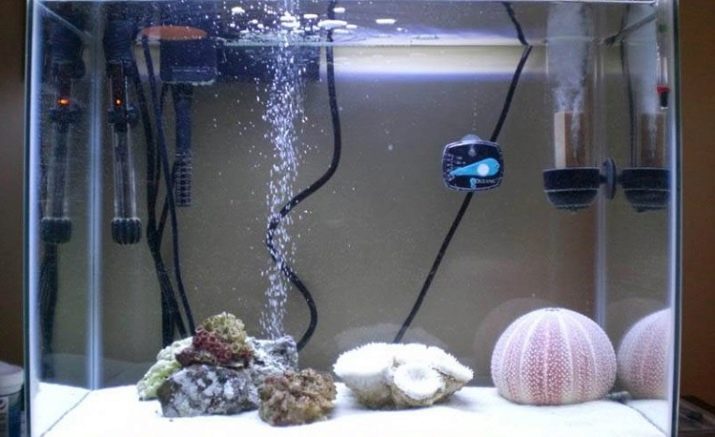
Noise level
If the basic technical parameters are in fact similar for all manufacturers, then in terms of noise level the leading companies outperform their own competitors. It is necessary to select a pump with a low noise level from a renowned manufacturer. If the aquarium is located in the bedroom, the quiet operation of the pump will come in handy.

Voltage
Typically, either 220 volts AC or 12 volts DC. The devices we are considering are powered from a 220 volt network. In branded systems, 12 volt pumps are used more. Despite the fact that they are less efficient, they can be connected directly to the power supply unit of the computer.
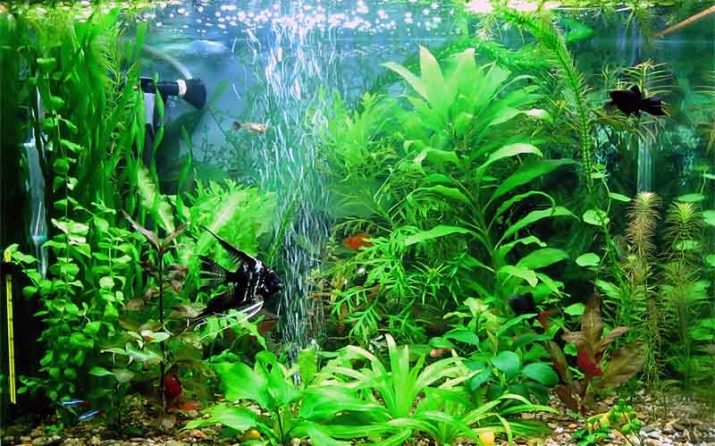
Manufacturing material
All pump casings are made of plastic, the only difference between them is the motor shaft. In fresh water aquariums, a pump with a metal shaft is practiced; for sea salt water, it is produced from ceramics.
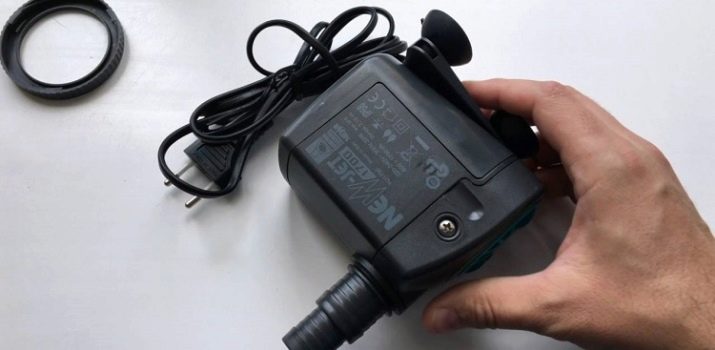
How to install?
It is better to install the pump in places that are covered for viewing, so that it does not disfigure the appearance of the aquarium. Also, be aware of the noise generated by the device. Positioning the unit as far away from the resting place as possible will significantly reduce the strain on your ears.
A good solution would be to install the device itself in a room that is not used for living. (for example, in the corridor), then you will need to lay the connecting hose through the hole in the wall to the aquarium. It is impractical to install the device behind a window, since significant temperature differences negatively affect the state of the membrane and thereby shorten the life of the device.
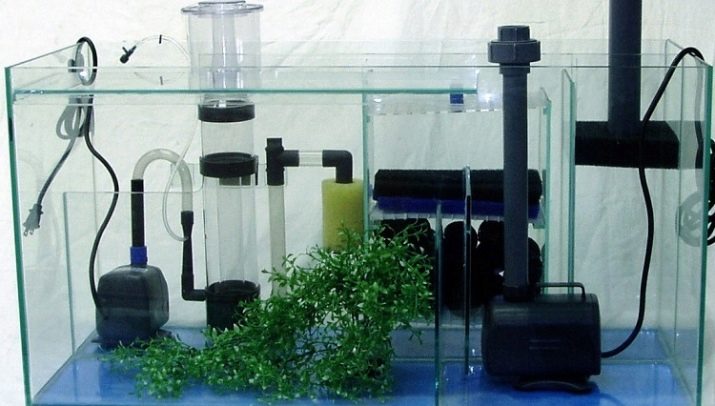
It should also be mentioned that almost all pump manufacturers in the documentation for their devices prohibit their installation below the water level.This is due to the fact that when the pump stops, water can run through the air tube by gravity, overflowing over the side of the aquarium, which will lead to flooding. If you cannot install the device above the level of the aquarium, you need to install a check valve in the break in the air supply line. This small device will save you a lot of complications. Its principle of operation is that the air flow can flow freely in the direction of the aquarium, but the valve is permanently closed to the back.
In addition, you can experiment with the pump installation option. If the unit is noisy when mounted on its feet, try to hang it or find a place where there would be no resonating effect.

Correct care
The normal maintenance schedule for the aquarium is weekly cleaning, this process also includes pump maintenance.
- The water is pumped out, then the pump is disconnected from the mains.
- The external filter sponge is removed and washed. For such tasks, only aquarium water is used, otherwise the beneficial bacteria that inhabit the sponge and are responsible for purifying the water will be washed out.
- Plastic elements are cleaned of plaque with a hard sponge or brush.
- The inside of any pump has its own internal foam filter, which must be cleaned as needed. To do this, the pump shell is disassembled (it is quite simple to do this with your hands), the inner sponge is removed from the pump housing and washed.
- After flushing the sponges, you will also need to pump the system from air, for which a hand pump is used, with which unnecessary air is expelled from the hoses.
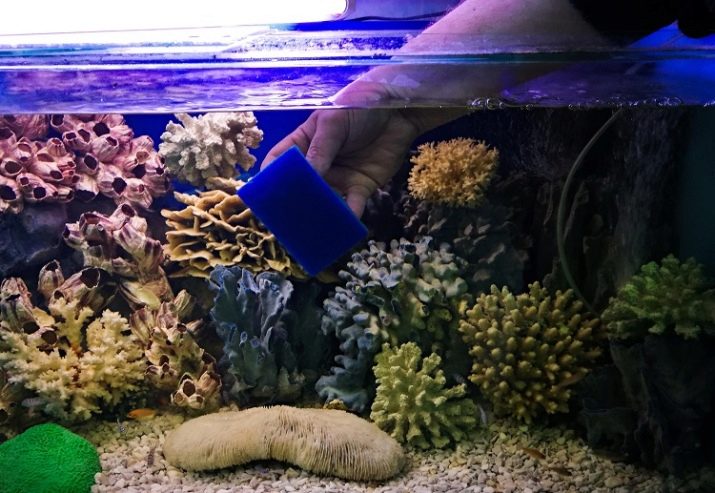
Finally
The pump is an essential element for maintaining the right microflora in the aquarium. You need to choose a device that is most suitable for the capacity of the aquarium - all kinds of inconsistencies can negatively affect its functionality.
The main attention should be paid to devices from the best manufacturers, which are silent - a higher price will save you from the incessant sound acting on your nerves and the annoying consequences of a sudden failure of the device.
In the next video, you will find a comparison of aquarium pumps from Polish and Chinese manufacturers.








